Misericordia Misericordia de mí .. ¿Qué está pasando?
Algunos de ustedes quizá reconozcan el título de este artículo como el título de una canción popular de Marvin Gaye que salió en 1971. La canción estaba en el álbum "What's Going On" y se convirtió en una de las más famosas de Marvin Gaye en su muy amplio repertorio de canciones famosas, y en 2002, la canción ganó un premio Grammy "Hall of Fame".
Entonces, ¿qué está pasando aquí? ¿Por qué mencionamos esto?
"¡Mercy, Mercy Me!" era la canción de Marvin Gaye sobre los crecientes problemas ambientales del mundo, que ahora se centran en los problemas del cambio climático y que resultan ser el tema de la exposición de esculturas de este año en el Paseo de Montejo. También fue nuestra reacción a las quejas, discusiones y argumentos que hemos escuchado en las últimas semanas sobre la actual exposición de esculturas montada por el MACAY a lo largo del Paseo de Montejo.
Cuando se montó la exposición, escuchamos que los artistas, un grupo de Alemania y uno de México, fueron traídos aquí para crear las obras (en lugar de enviar obras ya hechas, como se ha hecho en el pasado). Se les encargó usar materiales encontrados para crear sus obras. También nos informaron que el tema unificador de la exposición era el medio ambiente, el cambio climático y sus consecuencias. "¡Qué oportuno!", pensamos. "¡Qué moderno! ¡Qué inteligente! ¡Qué original!", y esperábamos con ansias ver la exposición.
Nuestro horario habitual para disfrutar las esculturas en el Paseo de Montejo es el domingo por la mañana, como a las 6 AM, cuando sacamos a pasear a los perros. El Paseo está muy tranquilo entonces, y tenemos tiempo, espacio y silencio para contemplar el arte. De hecho, es un museo al aire libre casi perfecto a esa hora... ¡lo recomendamos muchísimo!
Así que, hace unos domingos, pasamos una buena hora y media disfrutando la exposición. Después de observar seriamente las obras, tuvimos varias reacciones. En primer lugar, la mayoría de las obras no son tan visualmente agradables como las exposiciones de años anteriores. Algunas piezas fueron francamente difíciles de apreciar, y como en cualquier exposición de varios artistas, hubo unas cuantas que simplemente no nos gustaron. Por otro lado, algunas obras no solo fueron extremadamente creativas, sino también reflexivas y que invitan a la reflexión. Unas cuantas también fueron bastante hermosas. Al ver toda la muestra, nos sentimos complacidos y orgullosos de Mérida por tener la visión y el valor de montar un evento así.
Y luego empezaron los rumores, el chisme.
"¿Supiste...?", "¿Sabías...?" comenzaron frases llenas de acusaciones que denigraban la inteligencia del curador, de los artistas, de los yucatecos, y de casi todos los involucrados. Algunas personas odian el arte y piensan que solo parece basura. Otras personas aman el arte y creen que los artistas estaban haciendo un comentario no tan velado sobre la basura en México. Algunas personas denigraban a los que denigraban el arte.
¡Mercy, Mercy Me! ¿Qué está pasando?
Después de pensarlo, hemos decidido que lo que está pasando es que la actual exposición de esculturas en el Paseo de Montejo es una de las más exitosas del mundo artístico de Mérida en los siete años que hemos vivido aquí. Ha llegado al centro mismo de cómo pensamos sobre el Arte. Durante siglos, la humanidad ha debatido si es más importante que el Arte sea bello o que provoque una reacción en el espectador. El simple hecho de que algo sea bello no lo convierte en Arte. Nuestro perro es hermoso, pero no tendríamos mucha suerte intentando meterlo a un museo. Por otro lado, el hecho de que algo te haga pensar o te haga enojar o llorar, tampoco lo convierte necesariamente en Arte. Si quemamos tu casa, podemos hacerte llorar... pero ¿es Arte? (David Byrne podría argumentar que sí, claro...)
El punto es que la actual exposición de esculturas en el Paseo de Montejo está haciendo que todos los residentes y visitantes de Mérida piensen y hablen al respecto. La exposición ha renovado, en esta pequeña comunidad, el debate sobre ¿Qué es el Arte? No solo eso, ha estimulado conversaciones y debates sobre la basura, el reciclaje, la belleza, la salud del planeta, el sentido del Arte y mucho más. ¡Qué maravilloso!
Ayer, durante el almuerzo en un restaurante al aire libre local, una mesa de seis gringos debatía con entusiasmo sobre el mérito de ciertas piezas de la exposición. Otra gringa se nos acercó y nos contó una historia sobre lo que había escuchado de sus amigos yucatecos. En correos electrónicos a principios de la semana, continuaba el debate. Y por lo que escuchamos, la comunidad yucateca local también ha estado debatiendo los méritos de la muestra. ¿Cuándo fue la última vez que tanta gente hablaba y pensaba sobre el arte y la basura en Mérida?
Así es como nos sentimos al respecto. Estamos orgullosos de Mérida y del MACAY por la exposición actual en el Paseo de Montejo. Estamos orgullosos de que Mérida y el MACAY hayan sido lo suficientemente astutos como para mirar más allá de sus propias fronteras, mirar alrededor del mundo y reconocer las tendencias en la Vida y el Arte. Estamos orgullosos de que Mérida y el MACAY hayan reconocido un tema lo suficientemente importante como para dedicarle una exposición de todo un año. Y estamos orgullosos de los artistas involucrados por sus intentos de crear arte con ese tema como inspiración.
Nos encantaron especialmente algunas obras específicas. Nos encanta la motocicleta recompuesta que se encuentra en el lugar de honor en el Remate del Paseo de Montejo. El artista ha reciclado piezas de motocicletas y las ha unido para crear un ave futurista que gira con el viento y parece ser la misma encarnación de la velocidad. Hemos pasado mucho tiempo en Colorado, donde hay varias obras de este tipo en exhibición, y creemos que esta es una de las más hermosas que hemos visto. Nos encanta la obra del artista que envolvió los árboles y sus cercas de hierro en tela rosa, usando la tela para suspender más cercas en las ramas, mezclándolas y expandiendo nuestra visión de dónde comienzan y terminan los árboles y los límites.
Nos encantó el conjunto de bambú, torcido artísticamente sobre un espejo, reflejando al niño que todos llevamos dentro y que duerme en paz y seguridad, cuidado por la naturaleza. Nos gustaron los árboles envueltos en carpas parecidas a huipiles, recordándonos que los árboles son indígenas, están vivos y merecen el mismo respeto que los mayas indígenas. Incluso nos gustaron las cajas de fruta apiladas y pintadas frente al Walmart, testimonio de que incluso algo tan común y corriente como una caja de frutas puede transformarse en algo ligero, lírico y encantador con paciencia, cuidado y atención. El pilar de concreto, decorado con las hendiduras de botellas de plástico y cajas para llevar, inicialmente nos llamó la atención por sus diseños, y luego nos hizo pensar en la abundancia de esas cajas a nuestro alrededor y cómo contribuyen a la basura en el planeta. La casa "explotada" nos hizo pensar en la fragilidad de las estructuras humanas ante la naturaleza... e imaginamos que la degradación de esa estructura de madera en los próximos diez meses en el ambiente tropical será aún más motivo de reflexión. La caja de triplay pintada que fue construida alrededor de un árbol es una muestra visual de cómo la construcción humana tiende a encajar con la naturaleza, desde los animales privados de sus hábitats por desarrollos habitacionales hasta los propios humanos privados de los efectos tranquilizantes del mundo natural. Otras obras memorables incluyen el círculo de granos de maíz conteniendo tierra y mazorcas creciendo, el juego infantil hecho de piezas metálicas recicladas y la sala al aire libre con su piso de mosaico yucateco siendo roto por la naturaleza que emerge desde abajo.
Nos damos cuenta de que esta exposición en particular no ha sido bien recibida por muchas personas en Mérida. Los animamos a que le den otra mirada, y entiendan que esta muestra trata de algo más grande que el Paseo de Montejo y la ciudad blanca. Se trata del mundo en el que todos vivimos, cómo lo estamos tratando, cómo dependemos de él y cómo debemos encontrar, preservar y crear belleza aquí si queremos sobrevivir. Para las personas a las que les gusta la muestra, pero se sienten enojadas con quienes no, los alentamos a tener tolerancia y comprensión. No todo el arte es accesible de inmediato. No todo el arte es para todos. Arte es una palabra pequeña que abarca muchas ideas grandes. Hay espacio en el Arte para todos.
Seamos todos tolerantes con los puntos de vista de los demás, y usemos esta muestra como catalizador para reunirnos a hablar de las cosas que tenemos en común, incluyendo nuestra basura, nuestro planeta y el futuro. Nos haría bien a todos recordar algo que Marvin Gaye cantó en otra de sus famosas canciones de ese mismo álbum:
"No necesitamos escalar
Verás, la guerra no es la respuesta
Solo el amor puede conquistar el odio
Sabes que tenemos que encontrar una manera
De traer un poco de amor aquí hoy..."
Haz clic aquí para ver todas las letras de Mercy, Mercy Me y What's Going On. O mira Mercy, Mercy Me aquí y escucha What's Going On aquí.
Haz clic aquí para saber más sobre estrategias de Reducción de Residuos: Reducir, Reusar, Reciclar (Por cierto, hemos encontrado que la cultura en México supera con mucho a la de nuestro país de origen en las dos primeras, aunque quizá vaya detrás en la tercera. Pero según Wikipedia, las tres estrategias están en orden de importancia e impacto)
El Arte controversial a lo largo de la historia incluye Almuerzo sobre la hierba, Guernica, Madame X, La balsa de la Medusa y, más recientemente, Tumbling Woman, que se exhibió en el Rockefeller Center, sitio de otra obra polémica, El hombre en la encrucijada de Diego Rivera.
Lee este artículo en español en el sitio web del Diario de Yucatán aquí.




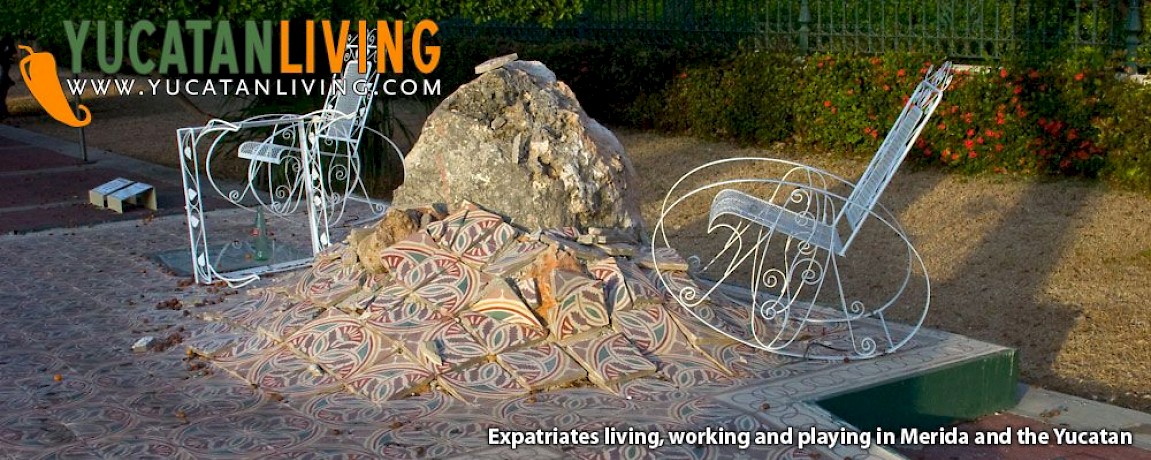
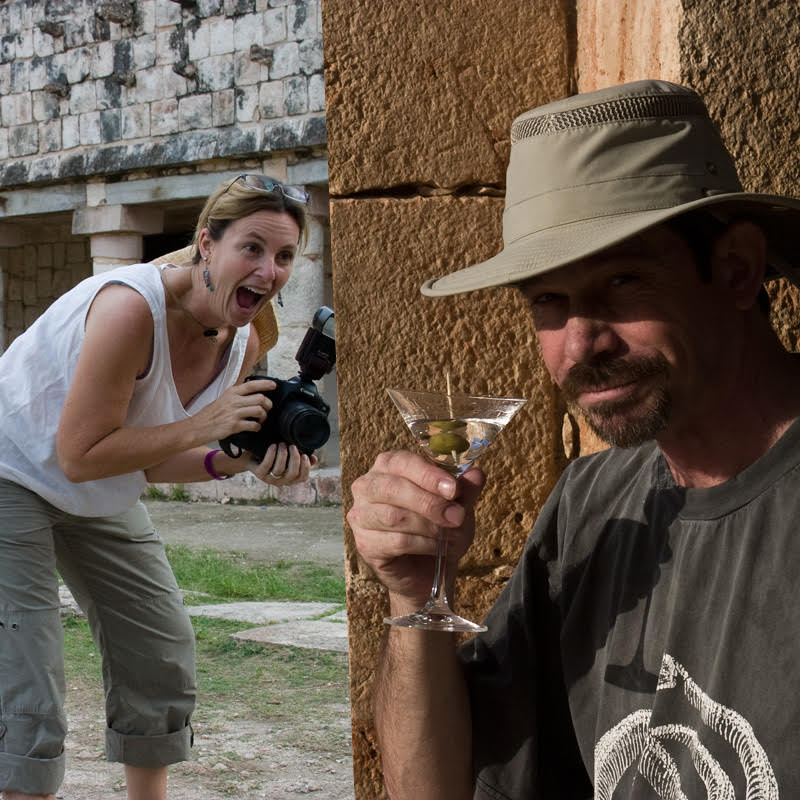

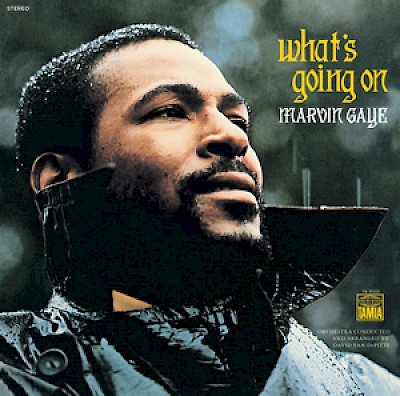
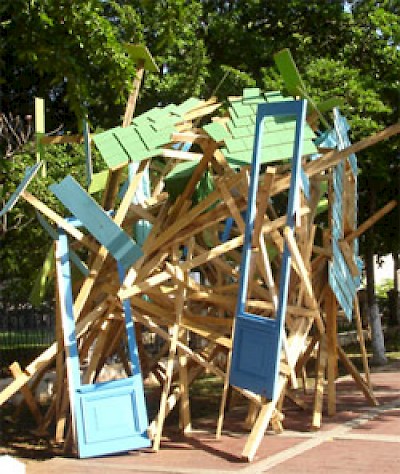
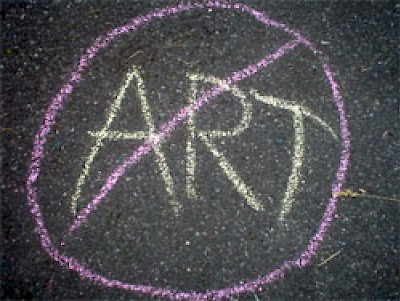
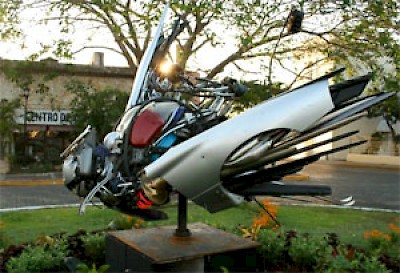
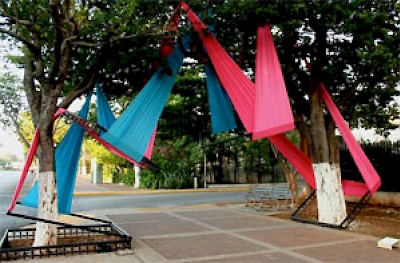
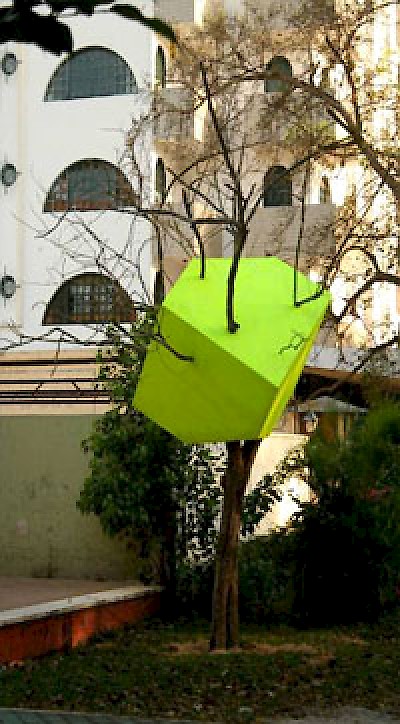

Comments
Lisa in el Norte 17 years ago
Gringos, I am so touched by your article and by the clever and thoughtful way you wove together the music and art. I still haven't made it to your lovely part of the world but I am continually impressed by your representation of it. Something 'artistic' about that!
Reply
Gerardo Espejo 17 years ago
I take my sombrero off for CasiYucateco.
Thank you.
I don't intend to keep the dilemma around the pertinence of this exhibit, but my gratitude is not only of someone who worked in the visual arts department in the past administration and also an artist myself, but first of all, I'm a yucateco concern about the art movement in Mérida, so I appreciate your valuable opinion as well as all the support all the ex pats community had given to the local art endeavors. Hope we can have more eyes with your sensitivity towards these approaches, specially on what contemporary art concerns.
Congratulations and thanks again to you and to all our friends in arms.
Gerardo
Reply
Working Gringos 18 years ago
ohmigoodness, that was beautiful. you brought tears to our eyes too.
we will never look at a fruit crate again in the same way! and THAT, my friends, is what ART is all about (in our humble opinion).
Reply
CasiYucateco 18 years ago
I like 'beauty' in the world, but am far from educated about 'art.'
I just want to say what I thought about the fruit crates. I first saw them while coming down the street one day, too hot, desperate for a fan and cold drink. I thought, "I wonder what show is coming here soon," thinking of a concert or a band and this being their backdrop. Kinda wacky, but that's what came to mind.
Later, I had the chance to actually look at the stack of fruit crates, rather than zooming by in a half-heat stroke swoon. It may be just a stack of fruit crates, but it literally brought tears to my eyes.
Think of all the poor who have close to nothing to call their own, yet the simple crate allows them to carry their produce to market.
Think of all the migrant workers who have harvested US food for a couple hundred years, poorly paid, dusted in pesticides and herbicides, doing back-breaking work in the hot sun from dawn to dusk.
Think of all the mercados across Mexico with their various local fruits and vegetables, the chaotic and cheerful banter between stalls and between stall owners and customers. Mothers with children propped up behind the stack of melons. And the fruit crates being the unifying element in the colorful, noisy kaleidesocpe of activity.
Think of all the people for which the lowly fruit crate has meant the chance for opportunity, not always for themselves but for their children. Toting goods to market, being filled by the tens of thousands in long rows of corporate vegetable fields like those of Yuma Valley, simply holding a household's valuables while traveling....
The fruit crate is a deep intrinsic part of so many people's lives. Even our own, though we may be oblivious to its importance.
What a beautiful display. To me, the colors, the high stacked cube of crates, the side of the road location with cars whizzing by... For me, it is a magical display of those dry topics of history, sociology, demography. They are a real part of the lives of real people.
Commemorating those lowly fruit crates pays tribute to those who feed us, each and every day. And reminds us that food isn't just simply 'found' in a supermarket, but delivered through the hard work and loving kindness of millions of simple laborers. For that, I give thanks.
Reply
Pauline S. 18 years ago
Hi again,
I love the expression "One persons trash is anothers treasure." A double entendre, literally, in this case. As a lover of ART, I see beauty expressed in many ways.
The pure visual and sometimes tongue in check humor of some of the pieces on the Paseo de Monteo. The impact, when you juxtapose things that appear to be oppositional, was fabulous. Merida is just that much more appealing to me because of it.....
What was so powerful to me about this exhibit was the sweet/salty relationship between the backdrop of the magnificant old colonial mansions and the forground of contemporary artistic interpretations of issues that face Yucatecans (and the rest of the world). The old and the new sharing space.
I am not surprised that there are many who grapple with the difficulting of how to move forward while still honoring the past. I remember watching the Ed Sullivan show with my family when the Beetles were on for the first time. (ok so that really dates me) My father was appalled - now he would admit that they were harmless compared to todays "Rock bands". Isn't it all relative? It is an age old issue in the art world that confronts many non-traditional exhibits. The associated costs almost always turning into a blame game.
There is a lot of art in the world that I don't like, personally, BUT - I respect the artist's and their admirers' right to their opinion, they like it. So, why can't all parties in this situation at least agree to the right to disagree with each others opinion.
I rarely look at art with the notion that I need to "know the intention of the artist", for me that isn't important. I don't ask "what is this supposed to be or what was the artist intent?" I just allow myself to see without intellectualizing what I saw.
Sometimes I love it, other times - not so much!
So, in summary, I loved the exhibit.....maybe I'll hate the next one. You can't please everyone all the time. Politicians are not art critics and vice versa. Be careful about placing blame. You just might lose some of your best people.
Thank you,
PS. Creativity - is an intentional accident
Reply
ileana 18 years ago
publicity... perspective... im in love of art, but, i think there are a few interesting works, creativity, inteligence but others are just trash...
Reply
Working Gringos 18 years ago
Luis,
We've never heard of the Amigos del Macay... can you explain to us what the group is about?
Reply
Luis Dzul 18 years ago
Just out of curiosity
I am sure you guys do not know that Jose Novelo Baeza M.D. is the present partner of Elba Garcia Villareal head of The Amigos del Macay.
What a coincidence!
Saludos
Luis Dzul
dzulluis@gmail.com
Reply
Working Gringos 18 years ago
Lucy,
We think that civilized discussion and conversation about art and it's value is healthy and needed. It is hard to know whether the right amount is spent on something like art... people spend millions of dollars on tiny paintings by dead artists... are they worth it? Quien sabe?
In any case, we agree that calling Yucatecans "barbarians" because they don't like the art is not only over-the-top but just plain wrong. Obviously, whoever said that hasn't been here long and doesn't understand the history of this area, or they wouldn't dream of saying such a thing.
Reply
Lucy Medina 18 years ago
I celebrate the topic of the exhibit. I don't think that all that is called "Art" is necessarily so. Most of the exhibits we saw were beautiful or imaginative, creative and so on. Others, like those old fruit crates, look like an afterthought, something done fast and easy. The placing is also unfortunate, the worst in the best space. I also think that critique encourages betterment and art is not sacred and can be criticized. Some of the reasons of dissatisfaction for the Yucatecos has to do with the amount of money spent. Several figures were quoted, I don't know exactly which it is. I can tell you that some self-named art gurus called those expressing criticism "barbarians". Muy exagerado, don't you think?
Reply
lane 18 years ago
Thank you for the insight. I will certainly look at the collection again, and with more tolerance. Your article was very thought provoking.
Reply
(0 to 11 comments)Next »